Apron mosaic for the kitchen: what happens and how to choose?
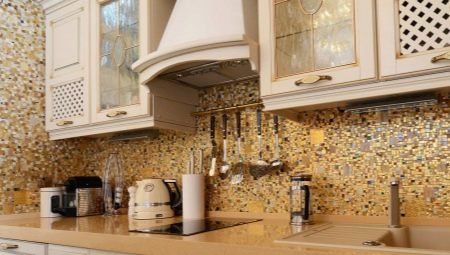
Today, a huge number of different materials can be used to decorate the walls in the work area in the kitchen. Among the available variety, it is worth highlighting the mosaic, presented today in a variety of colors, a wide range of designs, textures and types of raw materials used for production.
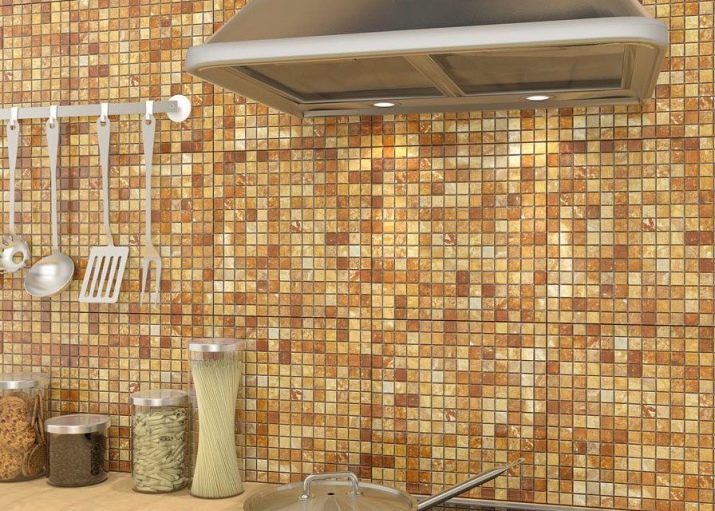
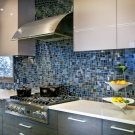
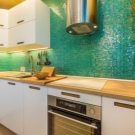
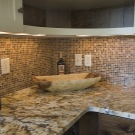
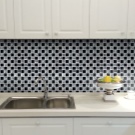
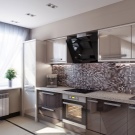
Peculiarities
A similar design of dwellings has been used quite often by man, since the times when the concept of what design and interior was not considered. Small stones were used as materials for the first mosaic aprons, with the help of which various abstractions or full-fledged drawings appeared on the walls. Today, mosaic tiles are a popular option used by many designers to decorate a work area, namely a kitchen backsplash.
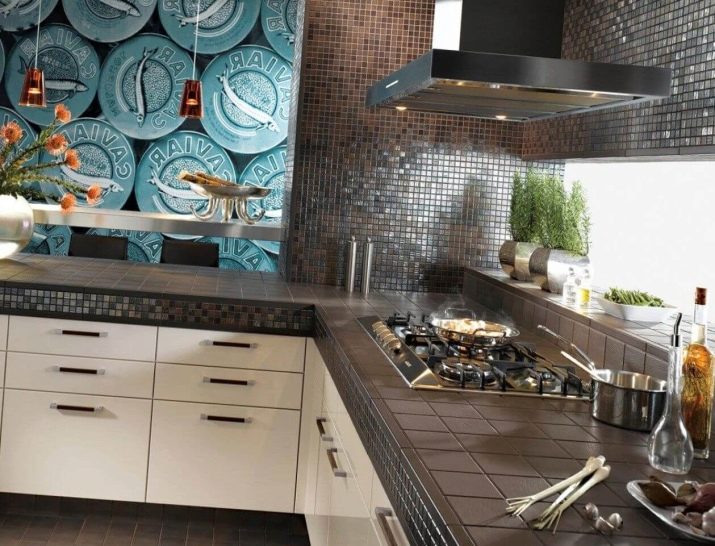
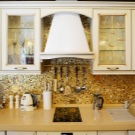
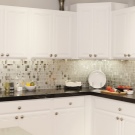
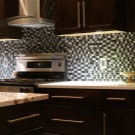
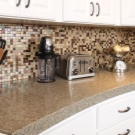
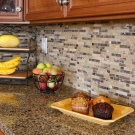
A huge amount of natural and artificial materials are used as raw materials for the production of mosaics, in the light of which such tiles are considered universal, in harmony with any interior.
However, despite the variety and attractiveness of such tiles, installation work will require the involvement of specialists who will help to assemble a single composition on the surface, excluding the possibility of a "floating" pattern. The necessity of attracting the master by the nuances of the mosaic canvas itself, which is a series of constituents of particles, different in the type of raw materials used, sizes and shapes, applied to a special base, is determined.
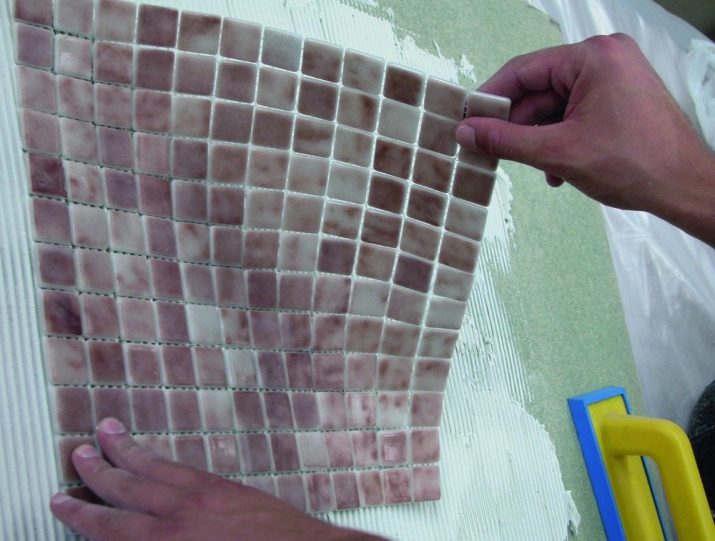
In addition to the specifics of the mosaic tile device, such a material requires special attention to the type of surface, the design of which is planned. The walls in the work area must be perfectly flat, which may require preliminary plastering or plasterboarding.

The design and color scheme of mosaic tiles for a kitchen apron amazes with its diversity, but the choice of this or that material option will directly depend on the stylistic solution of the entire room.
The mosaic can be successfully integrated into a classic interior using monochromatic compositions of medium-sized components, very often a delicate color palette is used to decorate kitchens in provence or country style. However, such areas will require the use of natural stone or imitation of natural raw materials.
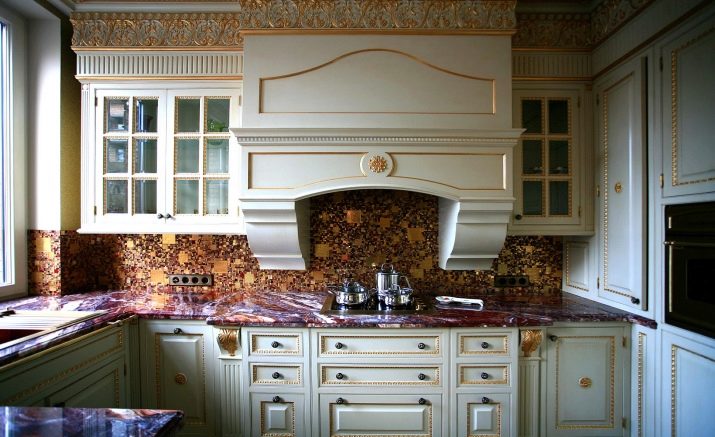
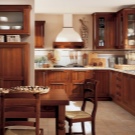
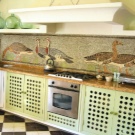
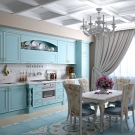
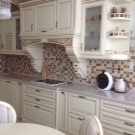
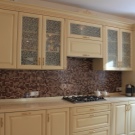
Kitchens in style minimalism or modern will be able to decorate with glass mosaics. Ethnic style complemented by variegated options, creating a colorful ornament in the working area of the room.
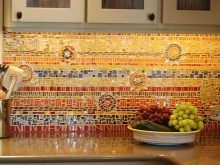
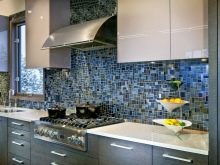
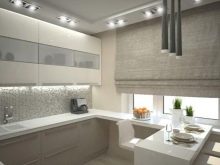
Advantages and disadvantages
A similar finishing material for kitchen aprons has its positive and negative qualities. There are several factors worth highlighting among the advantages of mosaics.
- Thanks to this wall design in the kitchen, you can create an attractive and original design. This applies to the use of monochrome variations, as well as compositions with drawings, patterns and much more.
- A huge selection of such tiles will allow you to use it in any room, taking into account the design of the headsets, the area of the room, the layout, the stylistic direction and other important nuances. In addition, there is a suitable option for every taste and personal preference of the owners and hostesses of kitchens.
- The mosaic itself stands out for a number of important qualities that will be relevant in rooms such as the kitchen. This applies to moisture resistance, resistance to temperature extremes, resistance to mechanical damage and ultraviolet light. Usually, mosaic kitchen aprons retain their functionality and attractiveness for many years, so they do not require frequent replacement.
- Most of the varieties of such facing tiles are distinguished by their ease of maintenance. Some surfaces can be safely cleaned with abrasive products.

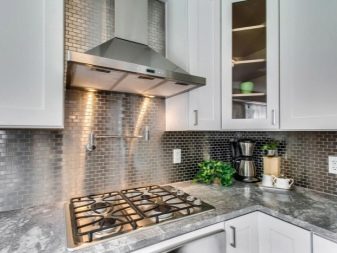
But with all its advantages, do not forget about some of the disadvantages that the mosaic is not without.
- In order for kitchen aprons with this design to retain their attractiveness for a long time, you will need to thoroughly approach the issue of styling, the choice of grout for the joints, as well as mandatory processing against the risk of fungus and mold.
- Not every mosaic option can be installed on your own. Therefore, the design of the apron in this form in most cases will be associated with additional expenses related to payment for the work of the master.
- The seams between the components are the weakest link in the entire finish, so they will require regular processing.
- As a rule, the cost of a mosaic will be an order of magnitude higher than the options for decorating a working area using plastic lamellas or chipboard panels.

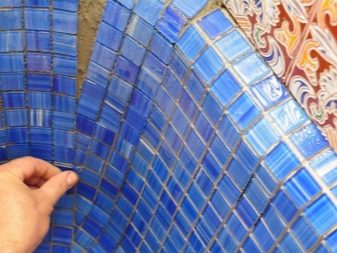
Views
Product classification is based on several criteria:
- size;
- the type of raw materials used for the manufacture.

Considering the size of the mosaic, the following products are on sale:
- with small components;
- large mosaic.
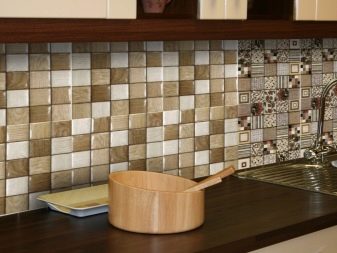
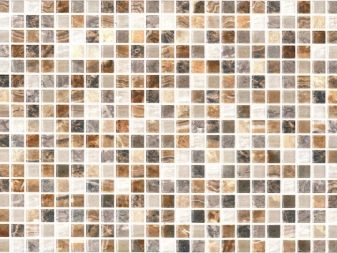
The first option is most in demand among consumers. As it stands out for its high attractiveness in surface design. Large varieties are interesting for their standard or non-standard shapes and sizes. On sale you can find multi-colored hexagons, large polygons and others.
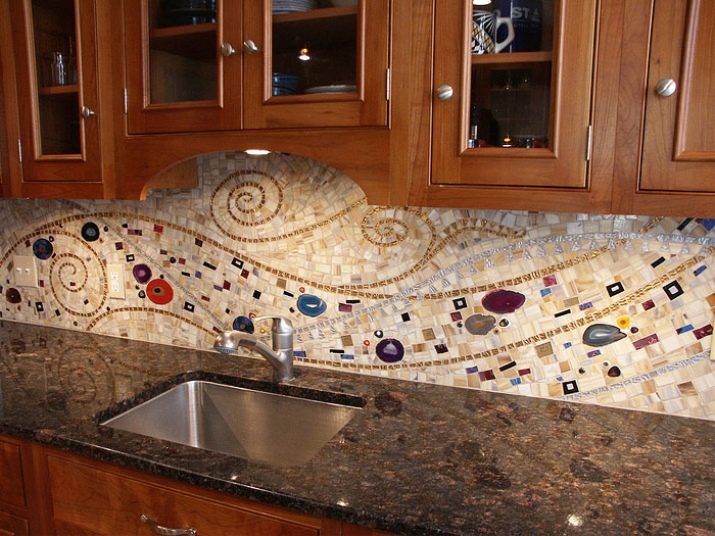
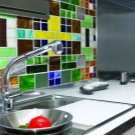



Large tiles with external mosaics resemble bricks.
Today, manufacturers of facing products offer their materials made from various raw materials. Mosaic tiles are no exception in this matter. Let's consider the most popular materials used for the manufacture of mosaic matrices.
- Ceramics. This type is distinguished by a large operational resource due to its durability. Ceramic mosaics are available in different colors and can be used in the interior of kitchens of any stylistic direction. Very often, ceramics are purchased in order to imitate more expensive veneering materials.

- Glass. The products are in the cheaper price range of tiles, however, the strength and wear resistance of glass products are not inferior to expensive raw materials. With the help of such aprons in the kitchen, it will be possible to visually expand the space, to focus on one area in the room. The mosaic is presented in various surface variations: there are matte, glossy, transparent and other facing elements.

- Mirror. Strong and resistant to mechanical damage raw materials. Typically, mirror tiles are made up of small elements, the thickness of which does not exceed 5 mm. Such aprons are very often used in small kitchens, as well as in rooms decorated in modern high-tech, modern and other styles.
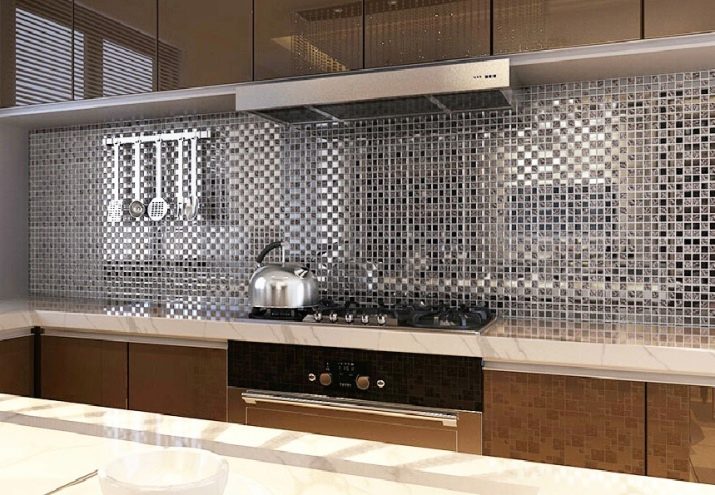
- A natural stone. An option that will last in the kitchen for decades. Interiors with this design look presentable and solid. Among the varieties of stone mosaics, you can choose granite or marble products.
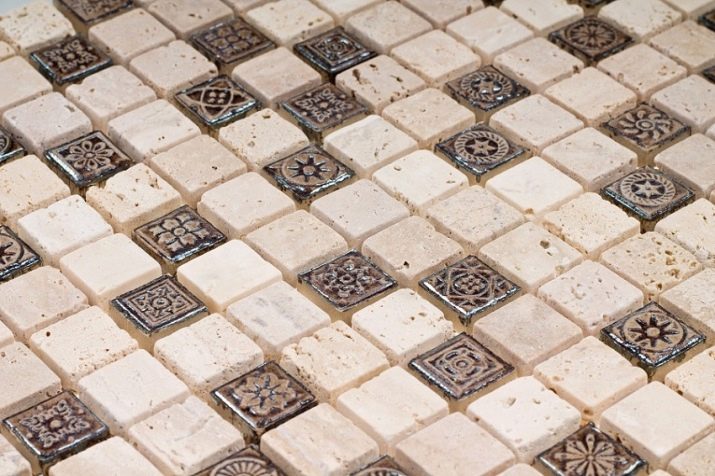
- Metal. A distinctive and attractive look for a kitchen backsplash mosaic. Typically, metal tiles are made of rubber and ceramics, treated with a layer of bronze, brass or stainless steel. The products do not stand out for their wear resistance, but they are popular due to their attractiveness.
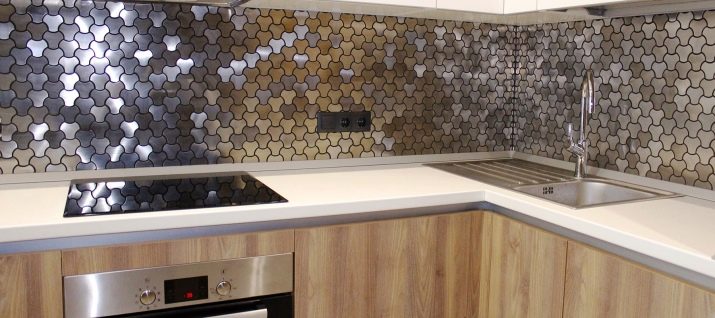
- Porcelain stoneware. Products are presented in a wide range of textures and colors. In comparison with natural stone, this type will cost several times cheaper, it has good indicators of resistance to mechanical damage.
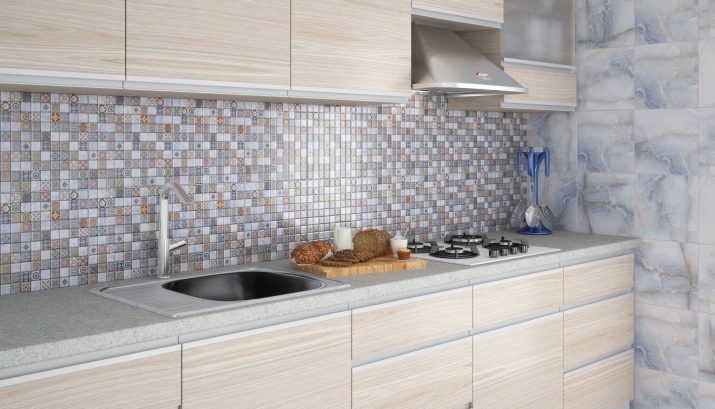
Dimensions (edit)
The standard sizes of a mosaic matrix are considered products of 30x30 centimeters, as well as 32x32 centimeters. However, in expensive collections of facing materials, you can find products with a printed pattern or ornament 100x100 centimeters.
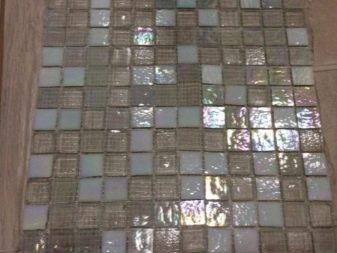
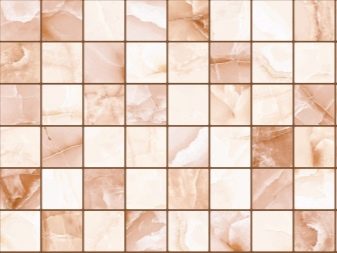
A small mosaic is represented by a size range of 1x1 and 2x2 centimeters, as well as 5x5 and 10x10 centimeters.
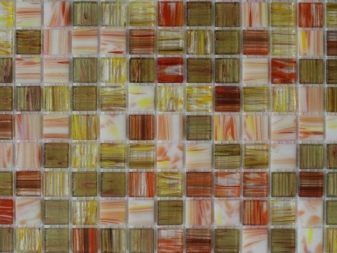
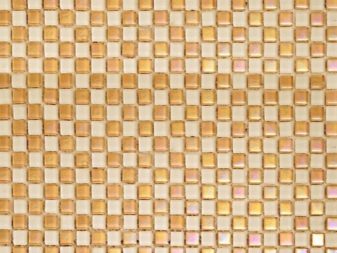
Color spectrum
The selection of mosaic tiles based on color design is an important point for a harmonious combination of products with the general style of the room and the kitchen set. Most often, they try to match the mosaic tile in color with the countertop or some object in the interior.
Tiles of all shades and colors can be found among the offered assortment of color palette. It can be calm tones from beige or white, dark colors represented by blue, gray, black, brown.
And also on sale there are products of bright colors, while yellow, green, red or purple mosaics are considered popular.
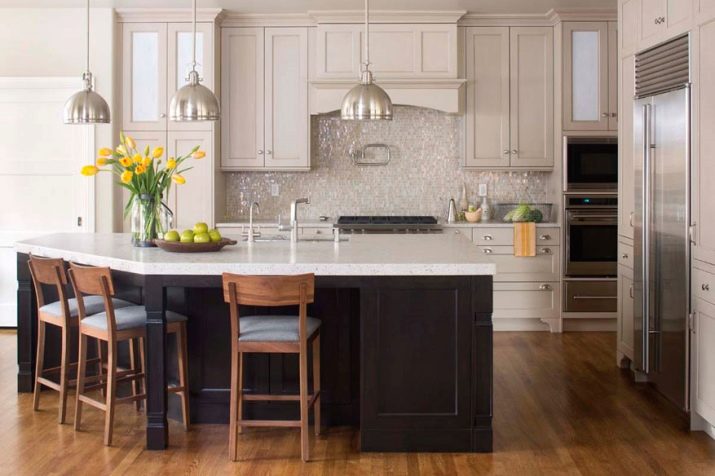
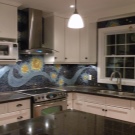
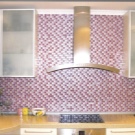

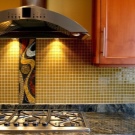
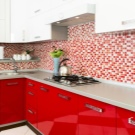
In addition, matrices can be of various types:
- mosaic made in one color - this option provides for the presence of the same elements in color, texture and size;
- mosaic mix - similar products have different shades, but within one or several colors, as a result of which the cladding will be presented in the form of a chaotic abstraction or a certain gradient on the wall;
- panel - products that should be laid out in a certain order in the center, which allows you to form a contrasting pattern, usually complemented by products in neutral colors.
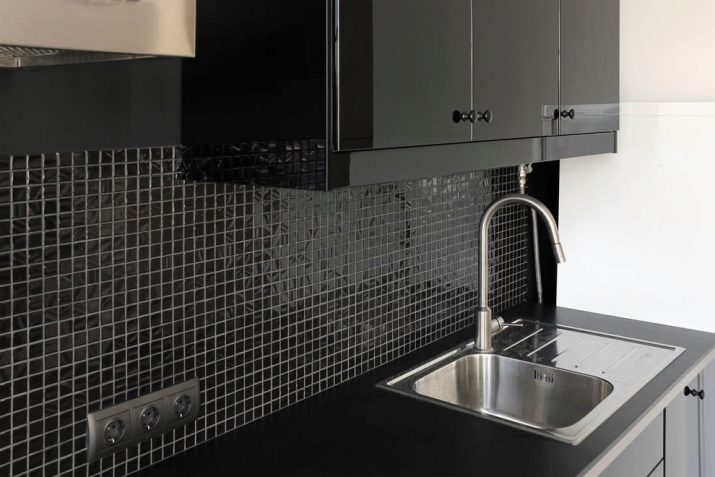
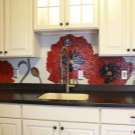
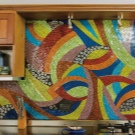
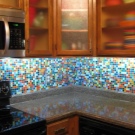
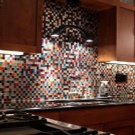
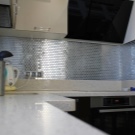
How to choose?
Setting the goal of decorating a kitchen apron with a mosaic, in the selection process, it is worth adhering to the recommendations of specialists.
- Matrix sizes, drawing and color scheme will directly affect the appearance of the room and the atmosphere.That is why, for small kitchens, it is worth avoiding drawings with sharp corners, mosaics lined with rhombuses, which will visually reduce the area of the room.
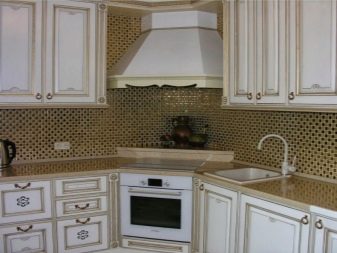
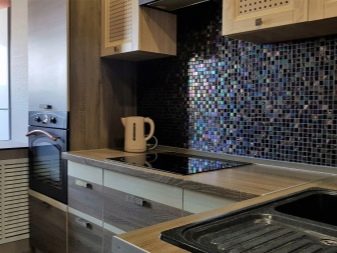
For spacious kitchens, there will be no such restrictions.
- It will be many times easier to lay out the matrices in the classic version, purchasing products with a matte or glossy base in a minimum of colors. Since you don't have to select a pattern, ornament, gradient, and so on.
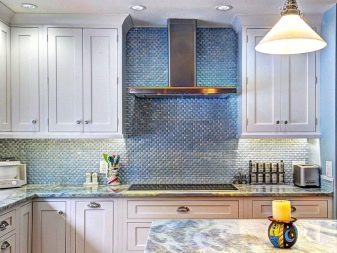
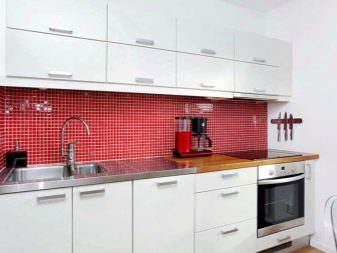
- To add extra luxury to the interior, it is worth considering options with gold or silver, which will be present in several elements. Glass and mirror mosaics will help to visually expand the area of the kitchen.
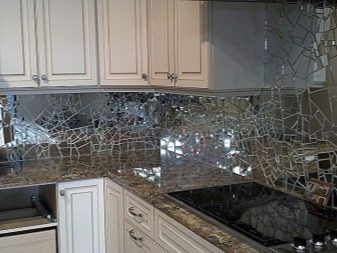
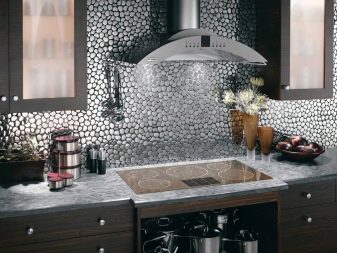
- As for the materials, ceramic products, glass mosaics, have proven themselves on the positive side. Such options stand out for their high wear resistance, in addition, they have an attractive and exclusive appearance.

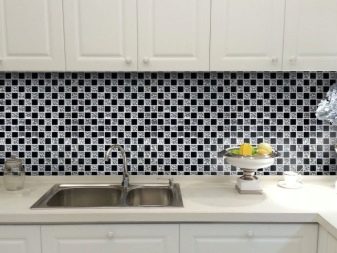
- The cost of a mosaic depends not only on the material used, but also on the color of the product. Typically, monocolors will be more affordable.
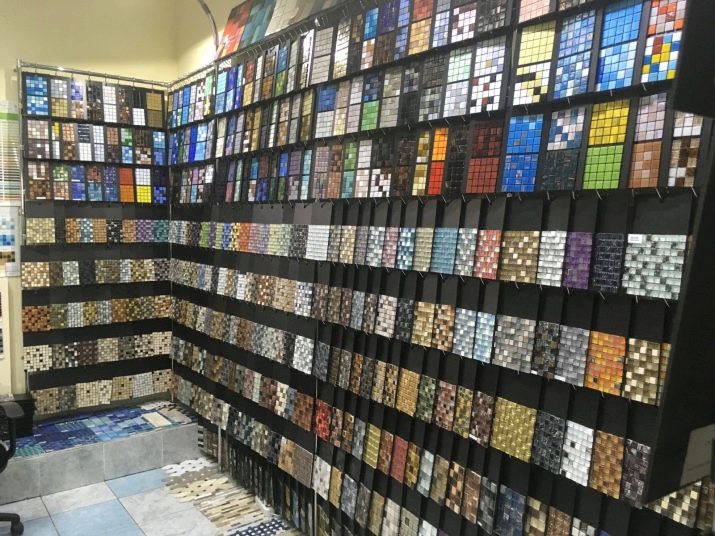
How to stack?
The process of decorating a kitchen apron consists of a number of steps.
- Surface preparation: the wall must be perfectly flat and dry. For these purposes, putty or drywall is used.
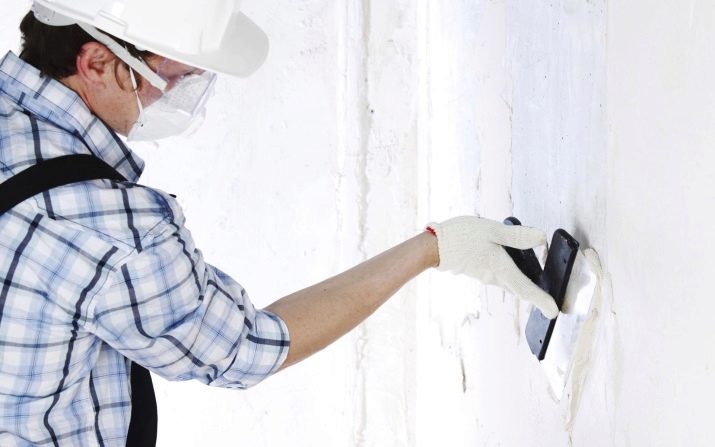
- After complete drying, markings should be applied to the wall. This will help to keep the seams straight and the die to be laid correctly. First, markings are made on the basis of a mosaic, then it is transferred to the wall.

- The next step is to dilute the adhesive. Immediately after its preparation, it is necessary to start laying out the tiles. First, the glue is applied to the wall, leveled with a spatula, after which the mosaic is attached according to the markings made earlier. To fix the elements, they must be additionally tapped with a rubber tool.
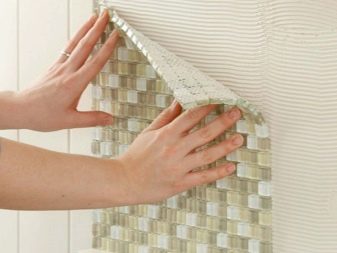
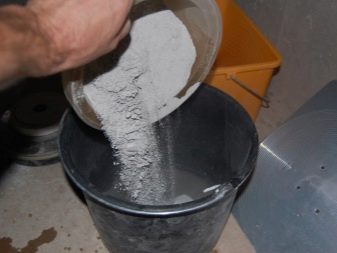
- After the adhesive has dried, the film or paper is removed from the tile. Grouting is carried out using a special mixture.
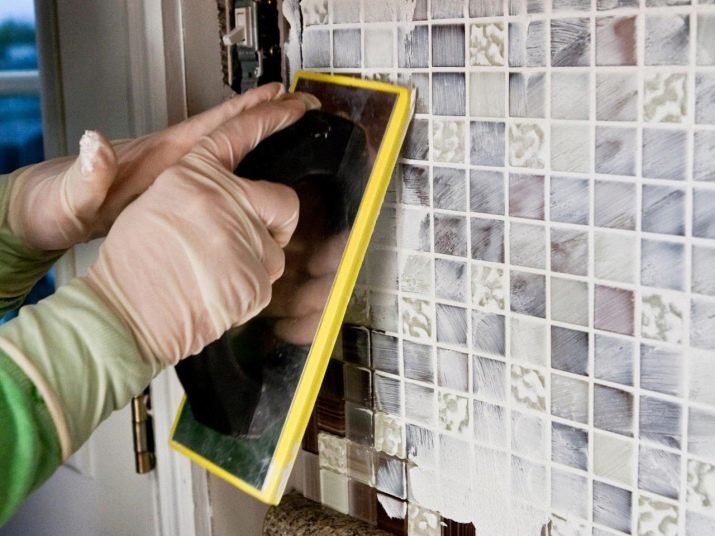
- The last step is polishing surface by cutting a bike or felt.
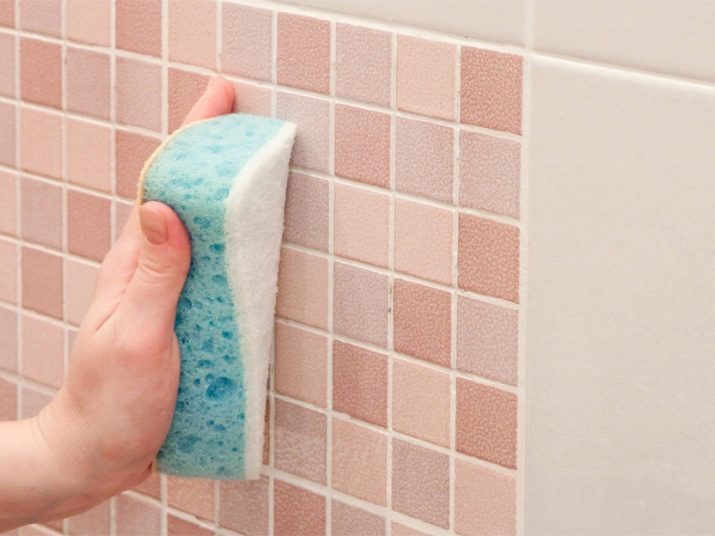
Beautiful examples
The use of small mosaics depicting a juicy mix of tropical fruits will accentuate the work area in the kitchen, highlighting the wall with an unusual and attractive design. This option will add lively notes to the light interior, and will also decorate the entire room.
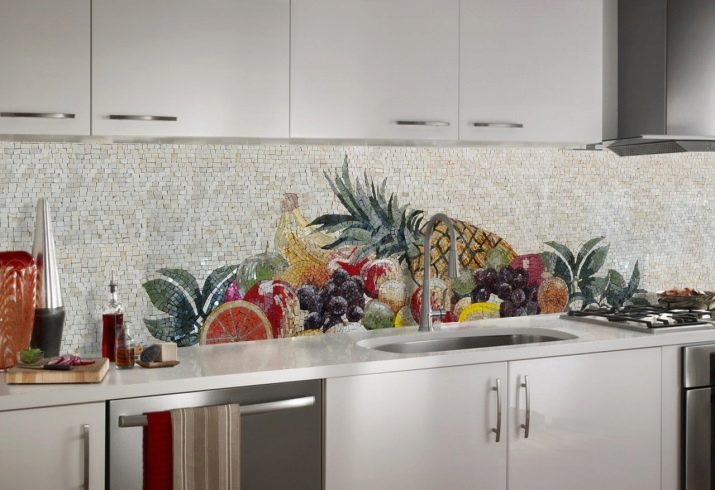
Even a small work area in the kitchen can be interestingly and tastefully decorated if you use a mosaic for facing the apron.
Floral prints in a calm color palette will decorate the wall, add mood and sophistication to the interior.
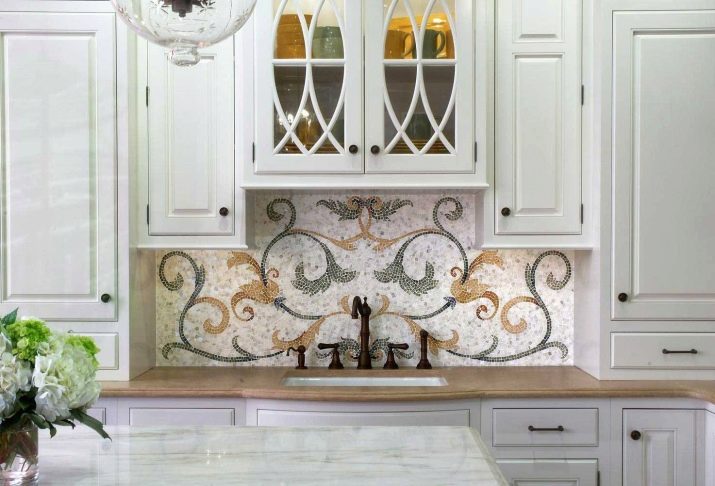
A mosaic with mirror elements will create an imitation of a wet and textured wall, which is guaranteed to become the main accent in the entire kitchen interior. Such a surface will add luxury to the design, as well as make the room visually more spacious and bright.
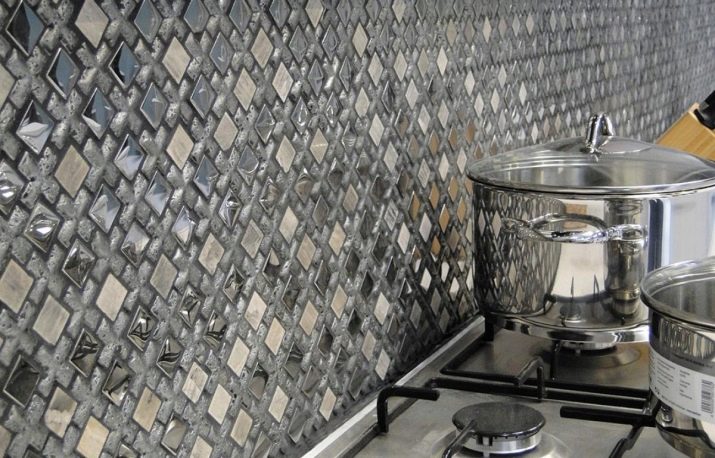
For information on how to make a mosaic apron for the kitchen, see the video below.








